Kitchen Project #80: Fudgy chocolate spoon cake
with Brian Levy, author of 'Good and Sweet', the baking book with no added sugar.
Hello,
Welcome to today’s edition of Kitchen Projects. Thank you so much for being here.
Today I’m delving into the brilliant mind of Brian Levy, the author of ‘Good and Sweet’, a book that defies traditional baking books in that it contains no added sugar – all of his bakes are sweetened by fruits. We delve deep into his development process and get to grips with how he rewrote the rulebook for his recipes, finishing off with his recipe for fudgy chocolate spoon cakes.
Over on KP+, I’m sharing another of Brian’s recipes: A ricotta, blueberry and fig loaf cake. Subscribers of KP+ will also be entered into a giveaway to win a copy of ‘Good and Sweet’ and a box of treats from Koro, an online dry goods retailer with all the best baking bits (Nuts! Freeze dried fruits! All the goodies!)
What’s KP+? Well, Kitchen Projects+ aka KP+, is the level-up version of this newsletter. Kitchen Projects is an entirely reader-supported publication. It only costs £5 per month, and your support makes this newsletter possible! By becoming a member of KP+, you directly support everything that goes into the weekly newsletter and get access to lots of extra content, recipes and giveaways, including access to the entire archive. I really hope to see you there:
Love,
Nicola
Summer break!
I’m travelling to the US Midwest to catch up with far-flung family for the next fortnight, so I'm taking a break from the newsletter. For KP+ subscribers, you’ll be taken care of with gorgeous autumnal recipes from the immensely talented Camilla Wynne (4th Sept) and baker extraordinaire Tarunima Sinha (11th Sept).
Sweetly does it
It’s not often that a book comes out, and it genuinely breaks new ground on a subject, so you can imagine how excited I was to hear about the publication of ‘Good and Sweet’. Brian Levy, the author, is an intrepid explorer of the world of baking without added sugar. Not one recipe in his book calls for caster sugar, demerara sugar, icing sugar, honey, maple syrup or any ‘added’ sugar! You name it; it’s not there.
Instead, Brian’s recipes are predominantly sweetened by the naturally occurring sugars in fruit. As a result, his recipes have complex sweetness; From pear custard tarts to crunchy shortbreads to pistachio studded galettes to pineapple pound cakes to peaches & cream brioche tarts, to ice cream (YES!!! ICE CREAM?!?!?!), ‘Good and Sweet’ is filled with beautiful recipes. Brian’s recipes are so beautiful that you forget the alchemy that has gone into creating them. As you flick through the book, you begin to wonder, ‘why hasn’t this been done yet?’ and then you realise: It’s a LOT of work. Lucky for us, Brian has developed a whole new approach. And any book that ups the amount of fruit I get to eat is already a win in my eyes.
It’s worth being clear up front that Brian’s recipes are not ‘sugar-free’ nor are they supposed to be – he uses ingredients that contain lactose, fructose and sucrose, but not in the forms we are used to seeing in baking books. Brian’s hard-earned formulas feature fresh, dried and freeze-dried fruits, skimmed milk powder and traditional dairy with its inherent sweetness, white miso and other smart substitutes. Although there are plenty of vegan and gluten-free recipes within the book, it is not focused on these areas and has many recipes that contain dairy and eggs. At no point does it go into preachy territory – there’s no mention of ‘guilt’ and there is LOTS and LOTS of butter. The goal of the book is to rethink the role of sugar in baking in the pursuit of flavour, with a light touch of mindfulness.
Today, we’ll deep dive into the science and the story behind ‘Good and Sweet’ with Brian, then finish up with a delicious recipe from the book – the ‘fudgy chocolate spoon cake’, which is basically a truffle in cake form.
Over on KP+, I’m sharing the formulation for his outrageously good ricotta, blueberry and fig loaf cake. Also, if you've subscribed to KP+, you’ll be immediately entered into a giveaway for Brian’s book:
Why sugar matters
To really understand how groundbreaking this book is, we first must understand the role of sugar in your everyday bakes; Although Good and Sweet is a book about unconventional baking, there is a lot to learn about conventional baking.
Sugar, besides sweetness, has an essential role in tenderising bakes. It’s sometimes good to think of sugar in its role in texture, or as a tenderiser, before thinking of it as a sweetener. This is because sugar is hygroscopic, aka loves water! As a result, it holds onto moisture, resulting in a tender, soft crumb and keeping the water away from the flour (which, as a result, creates gluten). Bakes with reduced sugar may rise higher due to the increased amount of 'free water’ available for steam, resulting in additional leavening power. As a result, more moisture is lost, resulting in a drier cake. On the other end of the spectrum, cakes made without sugar have lost one of their main occupiers of water, resulting in a whole other issue: Dense, wet, and heavy.
As well as this, sugar, when heated past a specific temperature, turns to caramel, providing those burnt notes we love so much. The ability of sugar to melt and transform also affects the final shape and the appearance (blistered, thin, shiny crusts!) of baked goods. As Brian found out, over seven years of testing, there was not one single ingredient that would replace all of these roles – there is not some magic ingredient for a 1:1 swap, and the book is filled with smart workarounds and multi-layered substitutions.
Deep diving with Brian Levy
So, what brought Brian to where he is today? I sat down with him (digitally) to find out his story. After graduating college, Brian set out to work in food media. Realising that getting kitchen experience might give him the edge when applying for roles in magazines, he jumped straight into the deep end: A stage in a bistro just outside of Paris. It was a small team of six, and Brian held his own. “The chef was always yelling at the other cooks like ‘don’t be scared! Look, Brian’s not scared!” he reflects. On returning to New York, he continued figuring out his journey into food. “I didn’t go to culinary school so I was basically thinking of stages as free education. I just started contacting all the best pastry chefs in New York.”
Reflecting on our conversation, I think it may have been Brian’s lack of rigid training that has allowed him to think more freely about pastries, culminating in this new approach to baking without sugar. By being open to exploring, he was able to write a book that threw out the rules of baking.
Eventually, he ended up at Babbo, the much-loved Italian restaurant in Manhattan, the first Italian restaurant in the US to get a Michelin star; Brian joined the team of the much-loved late James Beard award-winning pastry chef Gina DePalma. Within the small team, Brian found joy in pastry. “I loved the challenge of getting things out quickly and beautifully.” And, of course, there were the obvious perks of the job, “At the end of the night, when the ice cream had run low and had melted, I just drank them.” (Side note: You’ll be happy to hear that this love of milkshakes has continued, and Brian picked the ‘Black & White Milkshake’ from Good & Sweet as his favourite recipe!)
Was he already thinking about sugar at this point? “I was always thinking, do we need to put more butter in this? Do we really need to put more sugar in this?” he recalls, “I remember thinking that they didn’t always make everything better.”
After his stint at Babbo, Brian spent six months on farms via WWOOFing (Worldwide Opportunities on Organic Farms), travelling through Europe, hoping to “see certain ingredients that I liked up close. I was interested in chestnuts and honey and almonds.” Although it wasn’t part of the plan (meals or ingredients were supposed to be provided) during one of the farm stays, Brian and the other volunteers found themselves dumpster diving, a far cry from the plentiful world of a Michelin star kitchen; Making something from nothing ended up being a creative crash course, “All morning was making breakfast out of whatever garbage we had, then lunch and dinner, too” he reflects.
On returning to the US, Brian moved to Martha’s Vineyard, an island south of Cape Cod in Massachusetts, known for its rocky coastline, manicured gardens and seafood. “I worked on a farm there and for a few different caterers.” Here Brian began to wonder what a future in food looked like for him “I had started cooking in restaurants in the first place because I wanted to write for a magazine. But I couldn’t imagine working in an office after travelling.” In a total twist, Brian found himself studying architecture at Yale. Without the constant questioning of what his next role in food might be, Brian was freed up to fall back in love with cooking. While studying, he began dreaming up the book that eventually became ‘Good and Sweet.’
It didn’t all come at once, but Brian started experimenting after eating a perfectly ripe mango and realising that it was “as sweet as I’d want any dessert to be”. He looked for recipes and found nothing, “The closest thing was a couple of books from the 80s that used fruit juices concentrate.”
Reading Brian’s recipes, you begin to realise how sugar is sweet in a very one-dimensional way. With ingredients like freeze-dried fruit, dried fruit and white miso, Brian has created inherently sweet desserts with their own vibrant flavour characteristics. Beyond fruit, Brian found “small-scale epiphanies” with ingredients like non-fat milk powder (‘subtle, malty sweetness, with its emulsive powers and a good garnish alternative to powdered sugar.’), freeze-dried corn (‘it has an intensely sweet flavour’), roasted chicory (‘reminiscent of coffee but it actually contains natural sugars that coffee doesn’t.’). As well as this, looking outside of the box also resulted in some major colour benefits “like the purple of the Blueberry Cookie Crust Dough from freeze-dried blueberries.”
After a lot of trial and error, gathering data and intel, Brian created a secret weapon: An excel spreadsheet (my favourite!) populated with the nutritional information for both the conventional – and unconventional – baking ingredients. Although the exact details are, understandably, under wraps, Brian explains that it provides vital intel on water, sugar and fibre content, giving him some direction on whether he ‘needed to cook [the ingredients] down to reduce the water in something. It helps skip those first parts of testing blindly’ Of course, spreadsheets aren’t always perfect: ‘Sometimes it wouldn't work, but for the most part, I'd know it was going be the right level of sweetness and have the kind of structure that I was hoping for.”
Other key discoveries included how to manage the final shape of the bake. Brian explains that for his recipes, “you have to smooth the top more because it just doesn't spread the same way” since "they have more fibre in them and less sugar, which melts in the process of cooking.” To counteract this, he recommends “making things look more like you want them to end up looking after they've baked” than you might a conventional recipe.
Although Brian had to re-imagine much of the baking rulebook, there is still a focus on the traditional approach: “The temperature of ingredients and the order in which you combine them matter, but those points were really driven home by my experiments in baking without added sugars. You do not want to try, for instance, to puree cold dates with soft, room-temperature butter!”
So, what is Brian’s ultimate goal? “I want to convince the world to think of sugar more like the way that we think of salt. You don't need to think of it as the main component.” He also hopes the book will inspire readers to take to the kitchen. “I hope people are reminded that even when we think “it’s all been done,” we can still find new ways of doing things.”
To keep up to date with Brian, follow him on Instagram @bybrianlevy!
Sourcing ingredients
Brian’s book features some harder-to-find ingredients like freeze-dried fruit. Sourcing these ingredients can be tricky (and pricey), and finding them locally can be challenging. I’m happy to introduce you to Koro, an online marketplace for whole foods like nuts and dried fruits. They only stock larger bulk sizes (1kg+), which means they provide quality products at reasonable, transparent prices.
For KP+ subscribers I’ve teamed up with Koro for a little discount code for the site, and we’re also doing a giveaway! You’ll receive everything you need to make both of Brian’s recipes and a few of my favourite bits, along with a copy of Brian’s book!
Fudgy chocolate spoon cake by Brian Levy
An excerpt from ‘Good and Sweet’
ACTIVE TIME 35 minutes
TOTAL TIME 1 hour
Makes 8 to 10 individual cakes • GF
Editors note: I made this in an 8inch cake tin and baked for 25-30 minutes until cracked, then chilled in the fridge and sliced. It was heaven!
What makes it sweet? Dates, mostly, and the subtle sweetness of walnuts, milk, and cream.
55g unsalted butter
80g Unsweetened chocolate, chopped
130g Walnuts
265g Dates, pitted and chopped
90g Whole milk
1tsp Vanilla extract
85g Teff flour (or any gluten free flour, like oat flour etc.)
10g Dutch process cocoa powder
1/4 tsp Baking powder
1/4 tsp Baking soda
1/2 tsp Salt
2 large eggs
120g Heavy cream
To serve: Crème fraiche, whisked with a dash of espresso powder, and cacao nibs, for serving (optional)
Method
Position a rack in the middle of the oven and preheat the oven to 325°F. Lightly grease 8 to 10 cups of a standard muffin tin or eight to ten 4-ounce ramekins and set them on a half-sheet pan. Line a sheet pan with parchment paper.
In a metal bowl, combine the butter and chocolate. Pour about ½ inch of water into a saucepan whose rim is small enough for the bowl to rest on. Heat the water in the saucepan (with the bowl resting on top) over medium heat. Once the water begins to simmer, turn the burner off (but leave the whole apparatus on it) and let the residual heat and steam gently melt the chocolate and butter. Gently whisk them together, and once they have completely melted, remove the bowl from the saucepan and set it aside to cool a bit.
Spread the walnuts on the lined pan and bake until fragrant and lightly toasted, 7 to 10 minutes.
Once cooled, finely chop them in a food processor (without turning them into a paste) and set them aside in a bowl.
In the same food processor, combine the dates, milk, and vanilla and process until very smooth, 2 to 3 minutes.
In a medium bowl, stir together the teff flour, cocoa powder, baking powder, baking soda, and salt.
In a stand mixer fitted with the paddle, combine the melted chocolate-butter and eggs and beat on medium speed until they have cooled to room temperature and are somewhat light and fluffy, 3 to 5 minutes. Scrape down the sides of the bowl and add the teff-cocoa mixture. Mix on low speed to moisten all of the dry ingredients. Add the date puree and beat on low speed just until the batter looks uniform, then mix in the heavy cream, and finally the walnuts. Use a flexible spatula to scrape the bottom of the bowl to make sure that everything is properly mixed. Distribute the batter evenly among the muffin cups or ramekins (leave a little room at the top of the cups; they should be about 85 percent full) and smooth the tops.
Bake on the sheet pan until the tops are lightly cracked but the interior is still fairly moist and gooey, 15 to 18 minutes. If you’ve made the cakes in ramekins, they are ready to serve. If you’ve used a muffin tin, let the cakes cool in the pan on a cooling rack for a few minutes before unmolding them, then serve them warm or at room temperature with, optionally , a dollop of espresso crème fraîche and a sprinkle of cacao nibs. These cakes are best served immediately, but they are also good when tightly wrapped and chilled in the refrigerator for up to 5 days.
Thanks for reading! This newsletter is a reader-supported publication. The best way to support my work is to become a paid subscriber and help keep Sunday’s free for everyone.

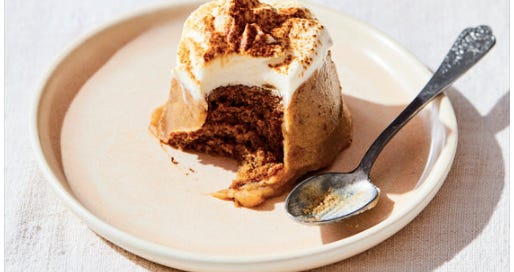



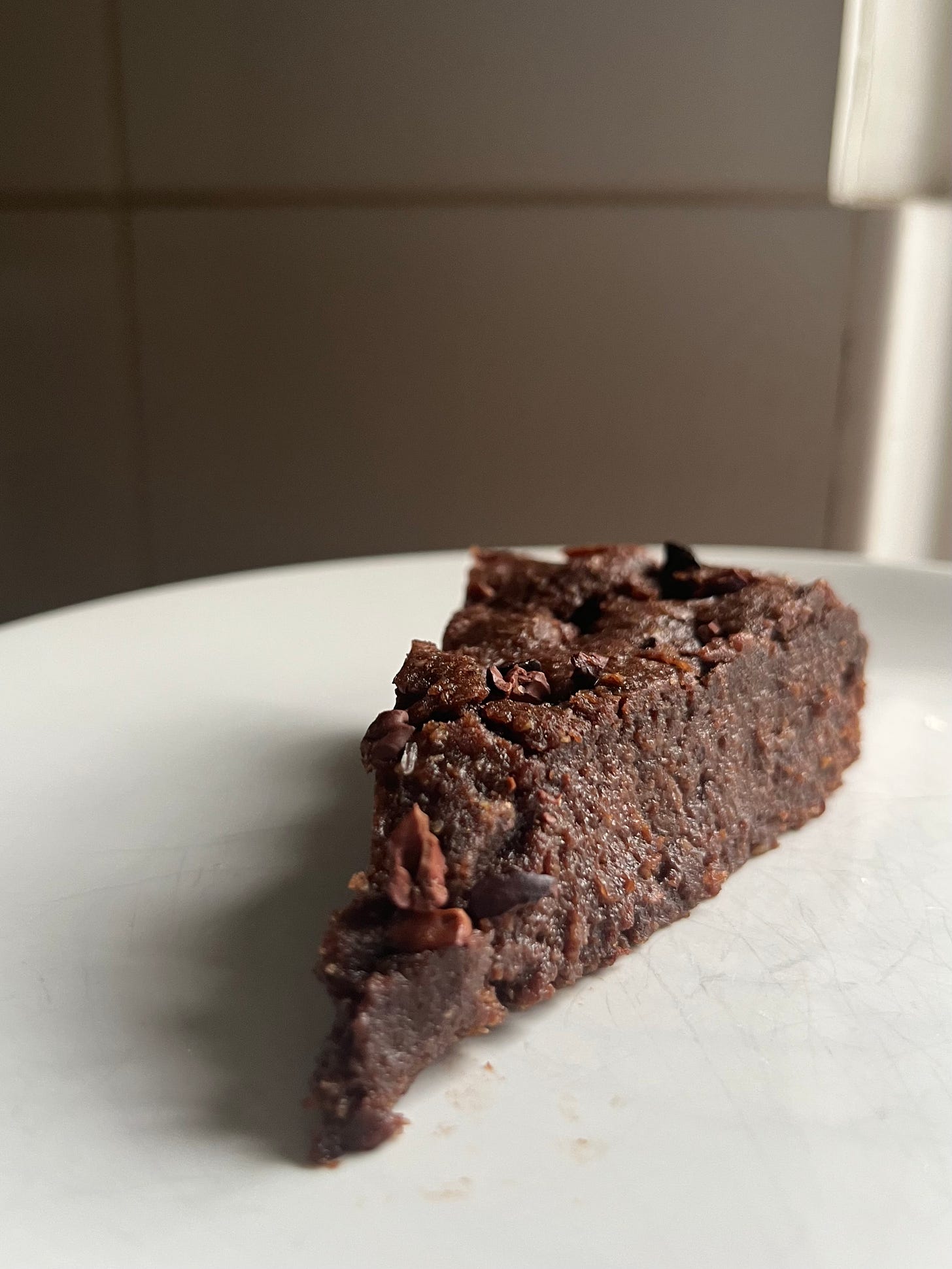

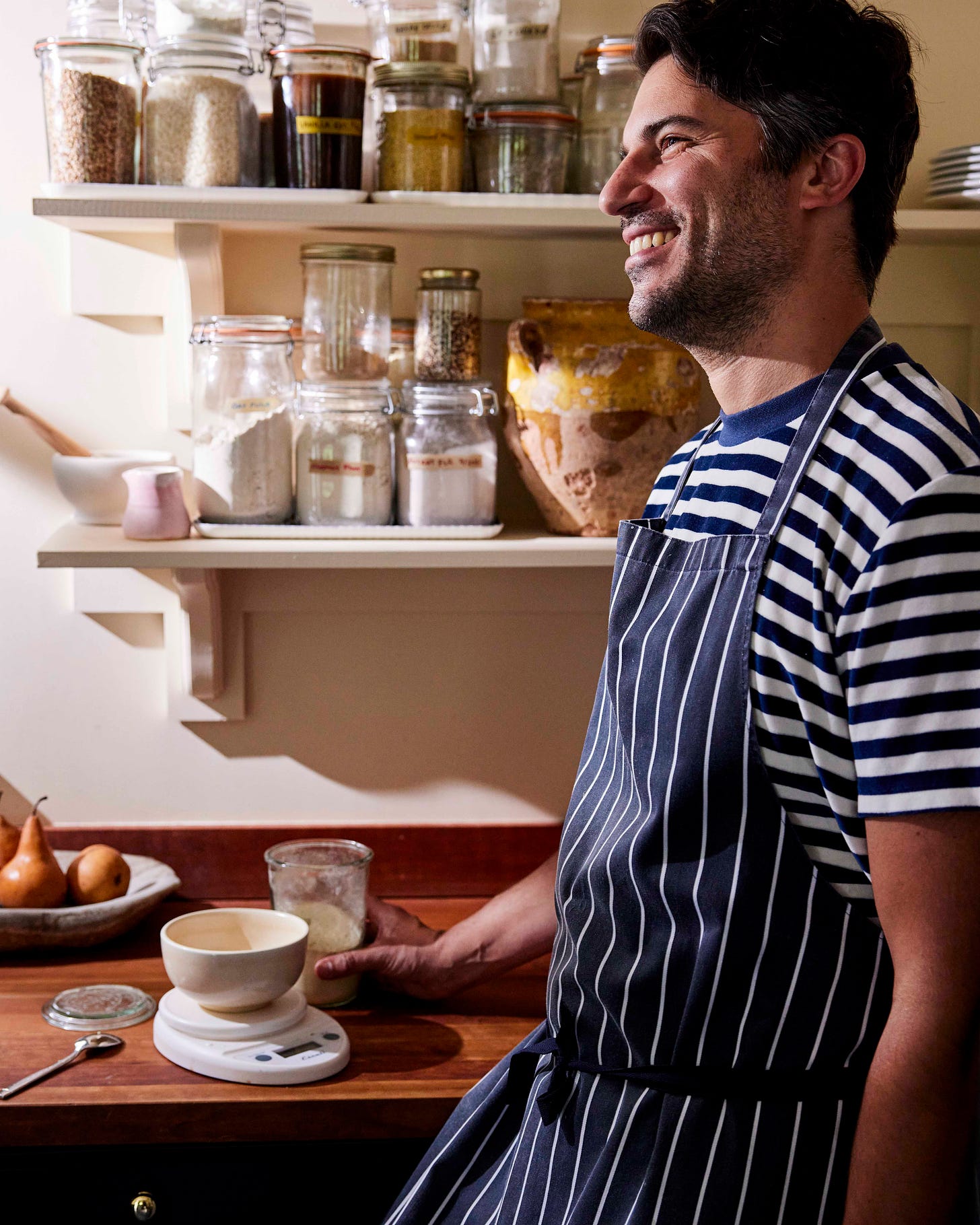
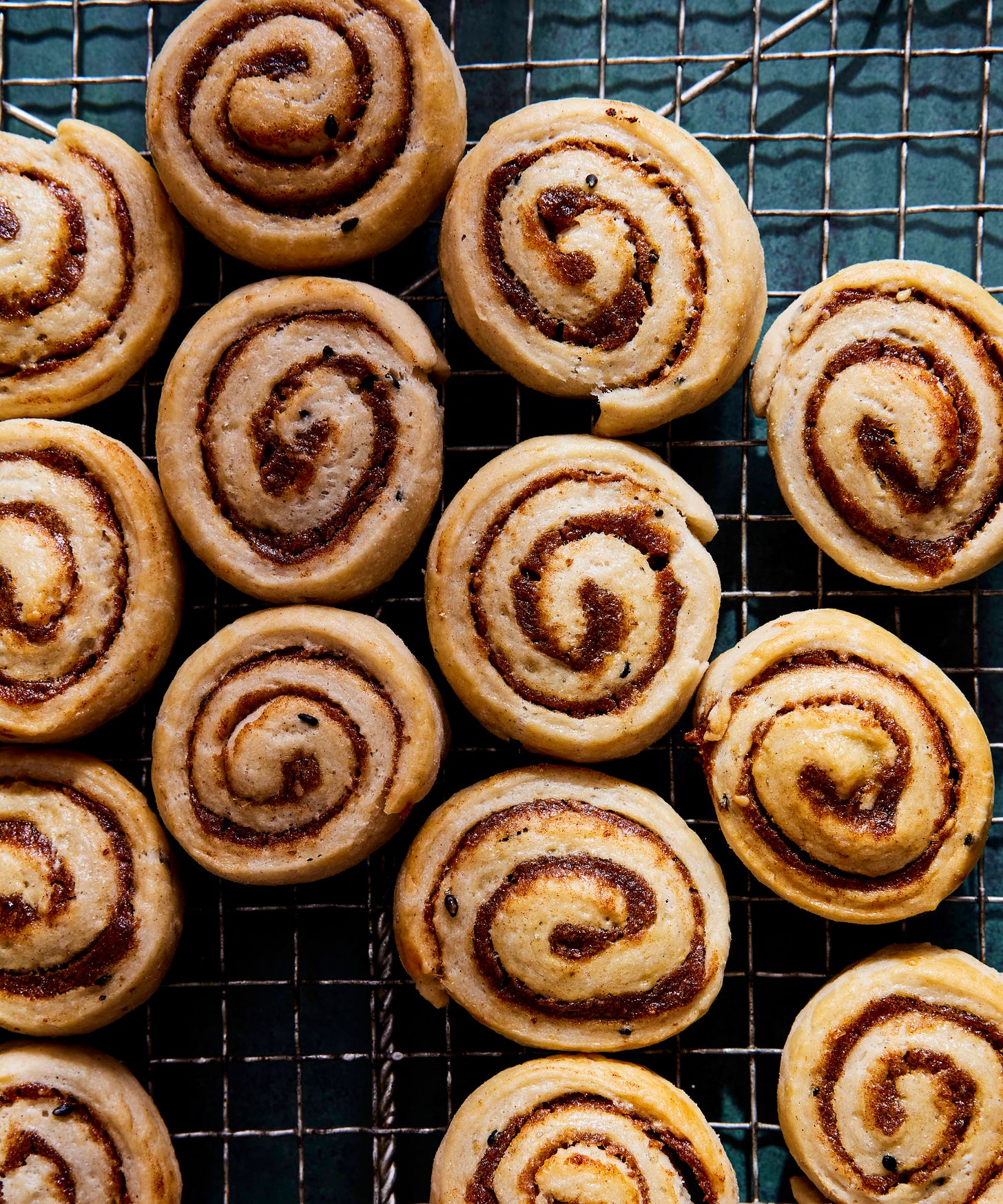
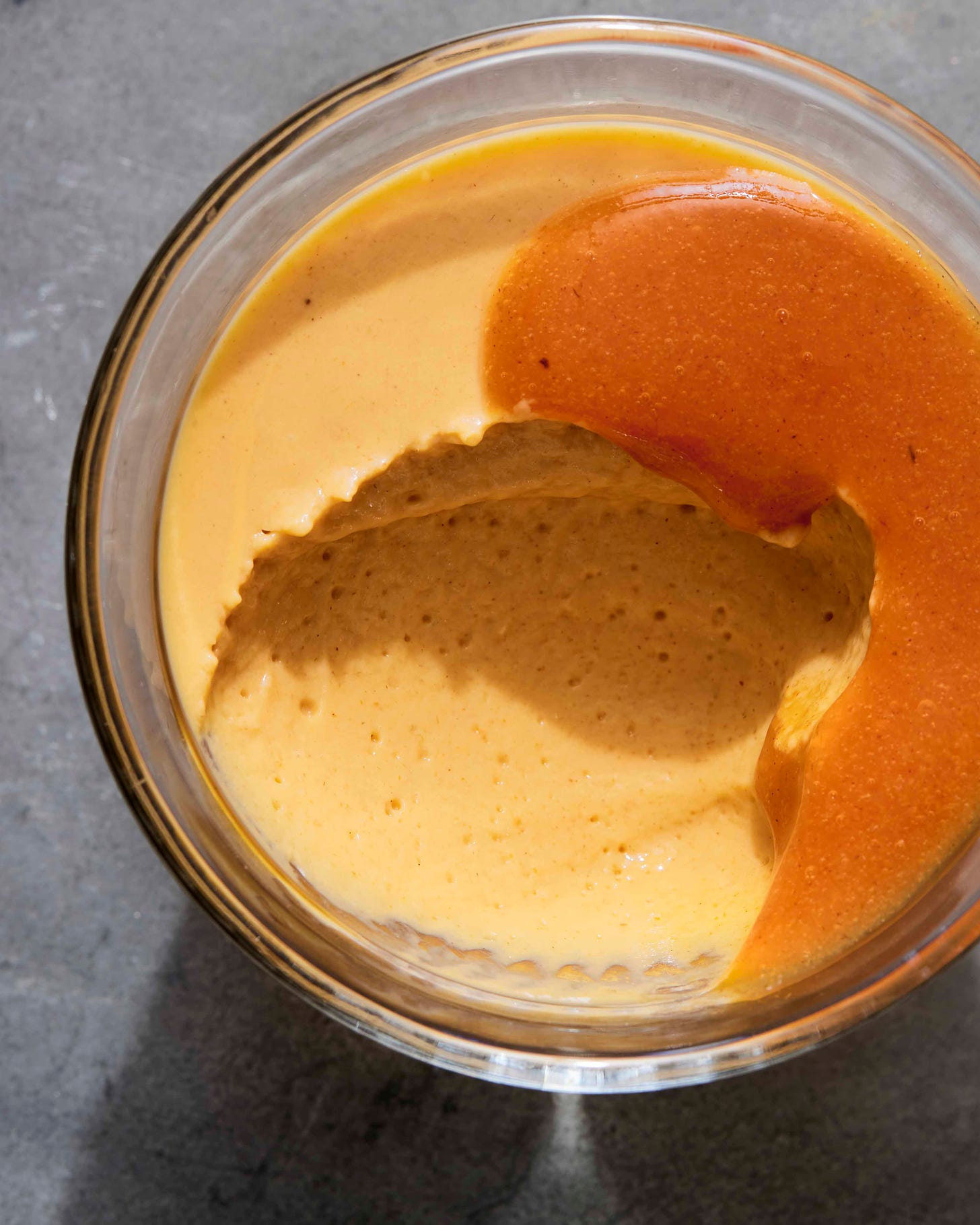
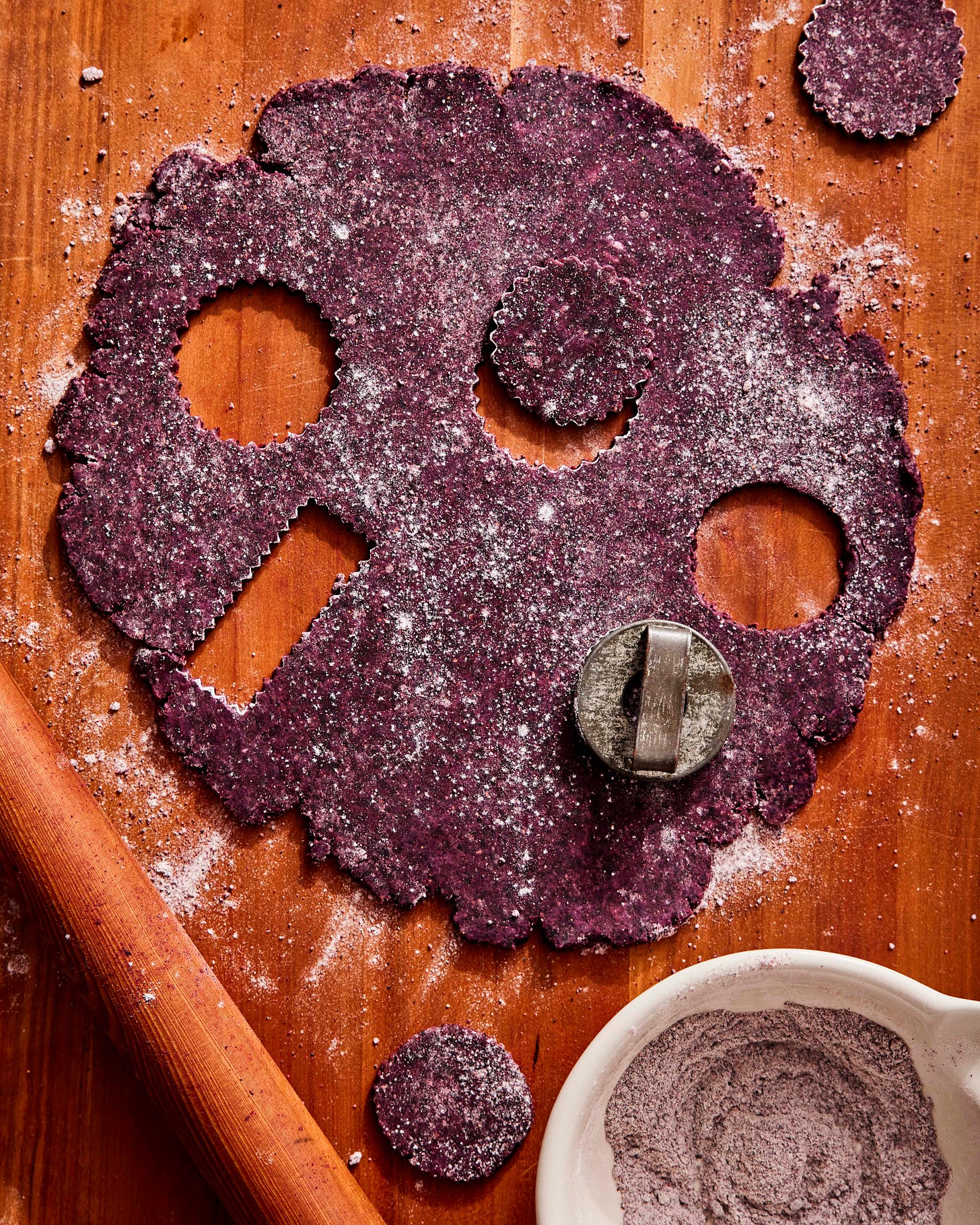


Hi! Is there a reason why gluten free flour is used? Would plain flour work as a substitute? Thank you!
As always Nicola, a brilliant, informative and engaging post. Have ordered Brian's book. Just want to thank you about the 'heads up' re' Koro. What an excellent site and the prices are super competetive with by far the best value for 1kg ground almonds that I've found. So many interesting and obviously good quality products, I would never have come accross them without your! Discount via KP+ also much appreciated. Have a good break.